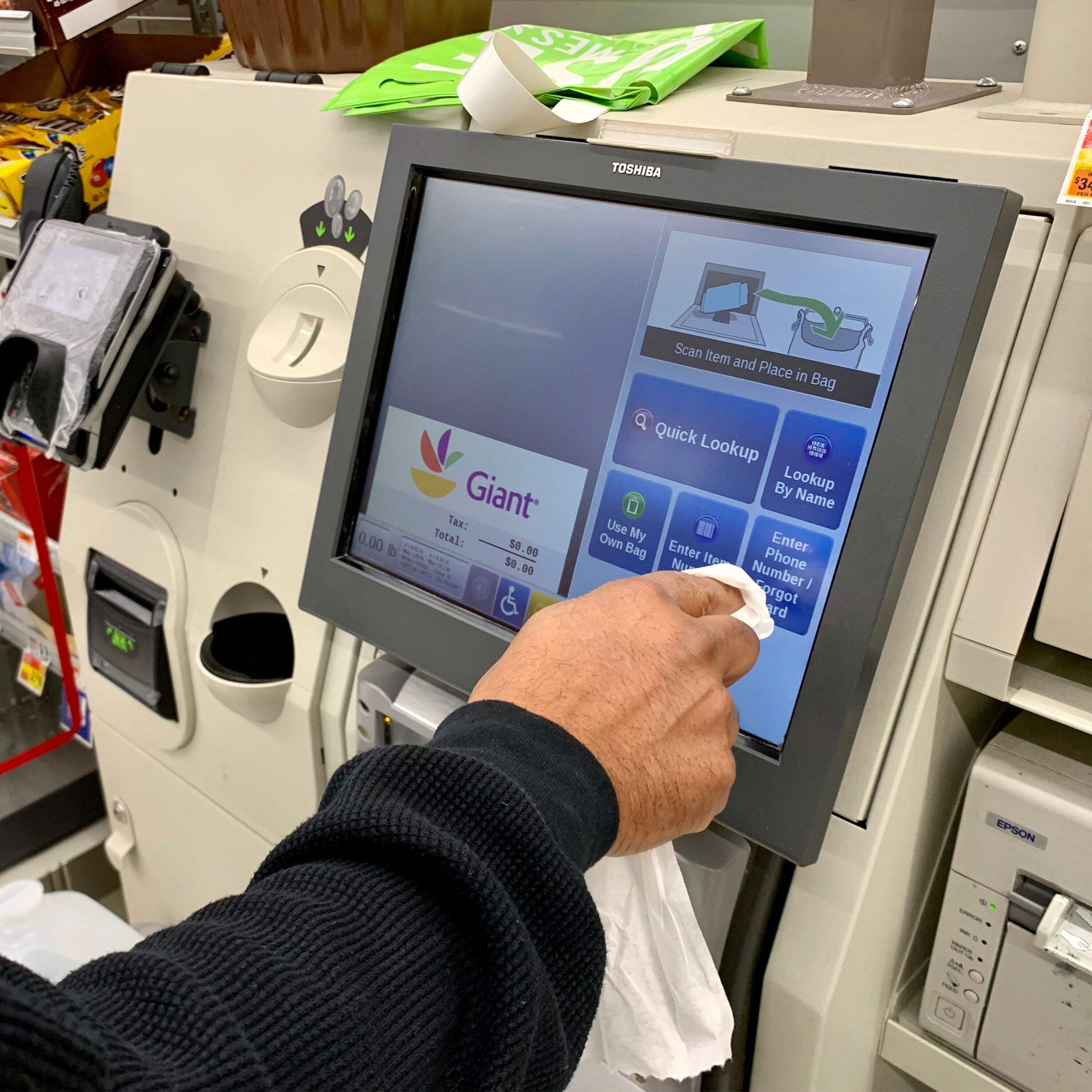We're gonna need a bigger boat-building industry
Related episodes:
Will Iran block the Strait of Hormuz?
The great turnaround in shipping
The wide open possibility of the high seas
For sponsor-free episodes of The Indicator from Planet Money, subscribe to Planet Money+ via Apple Podcasts or at plus.npr.org.
Fact-checking by Tyler Jones. Music by Drop Electric. Find us: TikTok, Instagram, Facebook, Newsletter.
Correction:
A previous version of this episode incorrectly said that there are 80 U.S.-flagged ships operating in global shipping. As of March, there were at least 95. The episode also incorrectly said that being U.S.-flagged means a ship was built in an American shipyard and has an American crew. There is no requirement that the ship be built in a U.S. shipyard, and citizenship requirements vary.
Learn more about sponsor message choices: podcastchoices.com/adchoices
NPR Privacy Policy
Press play and read along
Transcript
Speaker 1 NPR.
Speaker 1 On a recent afternoon, we paid a visit to the Brooklyn Navy Yard in New York. It was a sunny day, perfect for standing outside and listening to the gentle burbling of the East River.
Speaker 1 And inside, we could hear the hum of machinery from the small manufacturing businesses that are housed at the Brooklyn Navy Yard, like one company that makes scenery for theaters.
Speaker 2 This campus has always been a hub for industrial activity, but it used to make something different.
Speaker 2 This was the shipyard that produced battleships like the USS Tennessee during World War I and the USS Missouri during World War II. It shut down in the 1960s.
Speaker 1
And it's not just the Brooklyn Navy Yard that stopped producing ships. American shipbuilding dried up across the country in the decades following the Cold War.
Today, the U.S.
Speaker 1 builds five or fewer large ocean-going ships a year. China's list of orders numbered around 3,000 ships in 2024 alone.
Speaker 2 And some lawmakers see this imbalance as a threat to American national security and the economy. This is the indicator from Planet Money.
Speaker 1 I'm Darian Woods. And I'm Waylon Wong.
Speaker 1
Today on the show, the U.S. barely builds ships anymore.
The Trump administration wants to change that. Will it work? That's coming up after the break.
Speaker 2 When we talk about shipbuilding, we're usually talking about both commercial and military ships. These two industries are deeply intertwined, not just in the US, but around the world.
Speaker 2 So, for example, you can look at the Middle East, where there are fears over Iran potentially throttling oil shipments through the Strait of Hormuz, and there are American naval ships protecting oil tankers.
Speaker 1 This close relationship between commercial ships and the military traces its roots to a 19th-century naval theorist named Captain Alfred Thayer Mahan.
Speaker 1 He wanted American businesses to expand to new international markets, and that meant the country needed a powerful navy to safeguard American ships carrying cargo around the world.
Speaker 1 Emma Salisbury is a naval expert at a British think tank called the Council on Geostrategy. She says Mahan's ideas underpin how we think of American sea power and its importance to the economy.
Speaker 3 One of the kind of principal tasks of a navy is to protect global shipping lanes and the freedom of navigation to deal with you know pirates and bandits and all that kind of thing.
Speaker 2 So that's she's deadly serious when she's talking about pirates.
Speaker 1 Yeah, they were a threat then and we have modern-day pirates now.
Speaker 2
Yeah, not your lovable fiction types. These are serious people to watch out for.
The open water is a dangerous place and in World War I that put American sea power to the test. The U.S.
Speaker 2 had to transport huge amounts of troops and equipment to Europe by sea, and it had to use ships from other countries to help pull off such a big task.
Speaker 2 This fact alarmed some lawmakers because what if those countries decided to keep those ships at home instead of helping the US? That would be a national security nightmare.
Speaker 1
So enter the Jones Act. It was signed into law in 1920 and it's still in effect.
It says that ships traveling between U.S. ports must be American.
Speaker 1 This means at least 75% of the crew and the ownership of the ship has to be American, and the ships have to be assembled in the U.S. with major components made in the U.S.
Speaker 2 So a ship carrying cargo from, say, California to Hawaii, it has to be an American ship with an American crew. A ship traveling between California and Shanghai doesn't.
Speaker 3 That was intended to
Speaker 3 mean that there would be a healthy commercial shipbuilding industry, but it just simply hasn't worked.
Speaker 2
Emma says the Jones Act created some unintended consequences. An important one is it made shipbuilding costs much higher in the U.S.
than overseas.
Speaker 1 Now, the maritime industry did get a boost during World War II. But with the Jones Act still in effect, commercial shipbuilders lost ground after the war.
Speaker 1
They didn't have to compete with foreign shipbuilders. As a result, U.S.-made ships were more expensive.
Companies looking to move stuff around the U.S. opted for land alternatives like road and rail.
Speaker 1 And there was little foreign demand for U.S.-built ships given their higher price tag.
Speaker 2 Military shipbuilding also declined as defense spending fell after the Cold War.
Speaker 2 Emma says that when spending ramped up again in the early 2000s with the war on terrorism, naval priorities weren't really part of that expansion.
Speaker 3 So then when you come to today, even though there is now the recognition that the U.S.
Speaker 3 Navy does need more submarines, they need more surface ships, more drones, all of this, the industrial capacity just isn't there because it has atrophied over the last three decades.
Speaker 2
And the U.S. commercial fleet is looking ragged, too.
The U.S. Department of Transportation says a lot of the country's ships will need to be replaced in the next few years.
Speaker 1
Today, China is the world leader in commercial shipbuilding. American businesses and even the U.S.
military rely on Chinese-built ships to move stuff around the world.
Speaker 4 They literally could turn off our entire economy.
Speaker 1
That's Michael Waltz speaking about China at a September event. He's the current nominee for U.S.
Ambassador to the United Nations, but at the time, he was a Republican congressman from Florida.
Speaker 1 He was warning that China could cut off the U.S. from its supply of ships, and he has other national security concerns.
Speaker 4 So a shipyard that can produce one of the world's largest container ships can then pretty easily flip and produce an aircraft carrier and do it at scale with the workforce, the steel, the aluminum, and the know-how that has been invested and paid for by their commercial shipbuilding industry.
Speaker 1 Waltz helped draft a bill called the Ships for America Act. It was first introduced last year and it has bipartisan support.
Speaker 2
The bill wants to revive the U.S. maritime industry by offering incentives and recruiting new workers.
As of March, there were at least 95 U.S. flagships operating in global shipping.
Speaker 2 That means they have met citizenship requirements and follow American regulations. The lawmakers want to get that number to 250 in the next decade.
Speaker 2 Naval expert Emma Salisbury says that is a really ambitious goal.
Speaker 3 Building a big shipyard is a huge investment.
Speaker 3 It takes billions and you need the land, you need the people, you need the construction time, you need the latest manufacturing technologies to be able to build state-of-the-art ships.
Speaker 1
President Trump talked about making U.S. ships again in his State of the Union address.
Emma says this kind of support would be important for the industry.
Speaker 1
She likes the parts of the SHIPS Act that gives resources to shipbuilders. What she doesn't like are the restrictions on foreign competition.
So remember the Jones Act?
Speaker 1 That's the regulation that made American shipbuilding expensive.
Speaker 2
Emma says there are parts of the new bill that build on what the Jones Act has already done. The Jones Act is about ports.
The SHIPS Act talks about cargo. It proposes a requirement that 100% of U.S.
Speaker 2 government cargo be carried by U.S.-flagged ships. Right now, that requirement is half that.
Speaker 1 Emma says this policy is supposed to lead to more ships getting built, but what she thinks will actually happen is that less cargo will get transported because there is not enough ships.
Speaker 1 Then there's a continued uncertainty around tariffs, especially for crucial materials like steel. Emma says these policies could derail a shipbuilding renaissance.
Speaker 3 It makes me think of the kind of the core dichotomy of the Trump administration is this push and pull between making America's economy stronger by making American business stronger.
Speaker 3 And then there's this strong protectionist
Speaker 3
impulse that President Trump has towards things like tariffs, especially. So, to kind of make that bet on U.S.
shipbuilding is a really risky thing.
Speaker 1 In the meantime, the Trump administration is moving ahead with other policies it hopes will help erode Chinese maritime dominance.
Speaker 1 In October, the government will start charging fees for any Chinese-built or operated commercial ship that docks at an American port.
Speaker 1 This episode was produced by Ella Feldman with engineering by Quacy Lee and Patrick Murray. It was fact-checked by Tyler Jones and edited by Julia Ritchie.
Speaker 1 Keikin Cannon is our show's editor, and The Indicator is a production of NPR.





